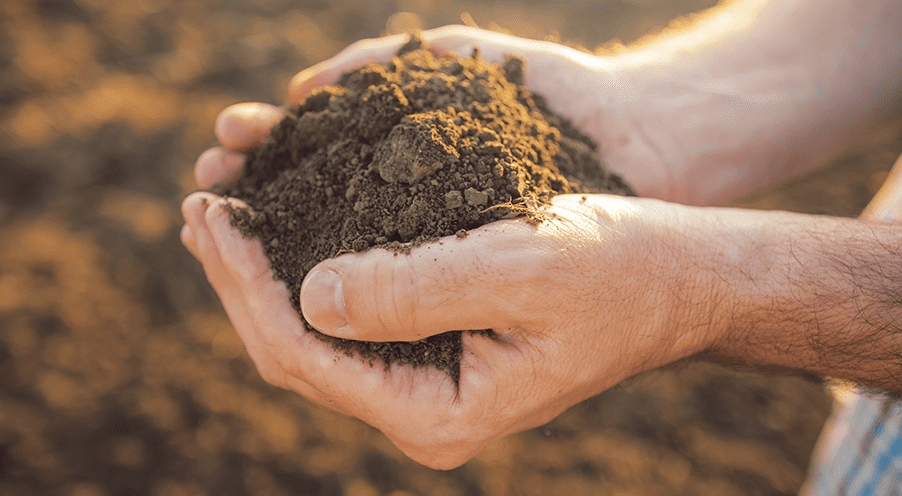SoilSmart
 Good soil health is essential not only to keep your landscape thriving but also for water conservation.
Good soil health is essential not only to keep your landscape thriving but also for water conservation.
Your property’s soil type
Find your property’s dominant soil type, available water storage and infiltration rate with LCRA’s Soil Type and Water Storage map, which uses U.S. Department of Agriculture soil survey information. Type your property address in the search bar below. Then click on the shaded area of your property to learn your soil type.
While there are many different soil types, the four main categories of soils are clay, loam, sand and silt. Different soil types have different pore sizes between grains, altering the soil’s water holding capacity and water infiltration rate. Most soils are a mix of these four categories. In a soil description, the first soil type is dominant in the mix by volume, followed by the next dominate soil type by volume. Knowing the dominant soil type for your landscape is critical for choosing proper plants and appropriate watering duration and frequencies. For example, clay soils have a high water holding capacity but a low infiltration rate due to its small grain size. Irrigation events should run longer at lower pressures to maximize infiltration in clay soils and avoid run off. Loam soils have a lower water holding capacity but a higher infiltration rate due to its larger grain size. Loam soils can absorb water much faster than clay soils.
For a full analysis of your soil type, order a soil test kit from Texas A&M AgriLife Extension or the Texas Plant and Soil Lab. LCRA’s WaterSmart Residential Rebate program offers rebates of up to $50 for a Texas A&M AgriLife test or 50% of the cost up to $125 for a Texas Plant and Soil Lab test. The results from a soil test will show your soil’s makeup including organic matter, nutrients, metals, pH and other useful metrics.
A healthy landscape
Keep your landscape healthy by preventing overwatering, aerating the soil and applying compost.
Add a soil moisture sensor to your irrigation system to prevent overwatering, which can cause run off and damage your plants. If the soil is adequately saturated from rain or previous irrigation events, the system will skip a scheduled watering event, saving thousands of gallons of water a year.
Aerating your soil allows plant roots access to oxygen and water, and applying compost adds nutrients. Adding compost to your soil can lead to a water savings of up to 25% when paired with a working soil moisture sensor. Cover your treated soil with mulch to lock in moisture and reduce water loss from evaporation.
LCRA’s WaterSmart Residential Rebate program offers rebates of 50% of the cost of soil moisture sensors, aeration equipment rental, compost and mulch.


Social Media